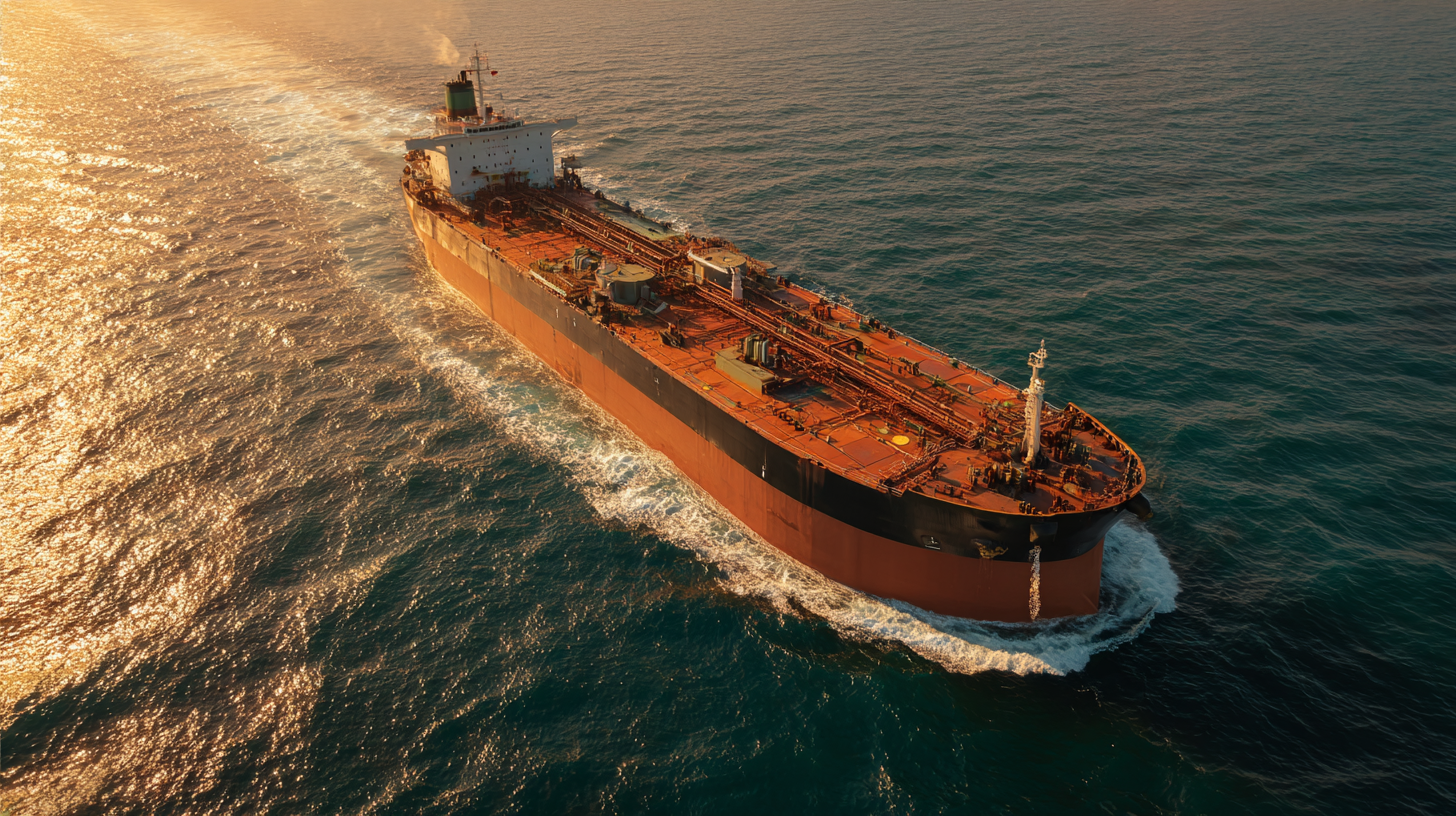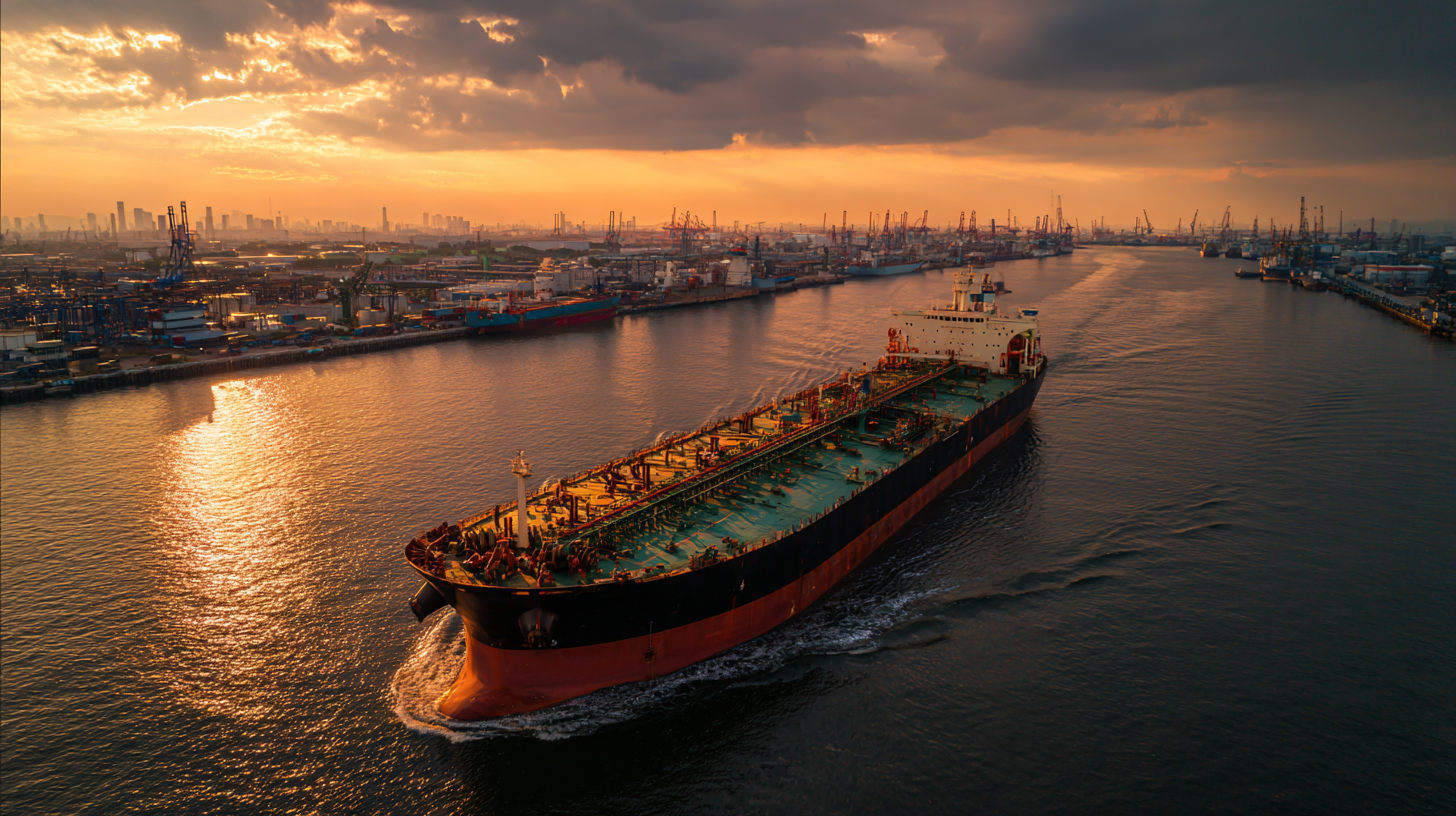- Home
- >
- Knowledge Center
- >
- Blogs
Blogs
Sharing knowledge is key to an innovative and healthy industry! This knowledge center is therefore a central place on our website to share information. Read all about our industry in the blogs below!
Challenges Faced by Global Buyers When Sourcing Best Tanker Parts: A Comprehensive Guide
In the global marketplace, sourcing the best tanker parts has become increasingly challenging for buyers. With the international demand for oil and gas projected to rise by 6% between 2023 and 2025, according to the International Energy Agency, the need for high-quality tanker components is paramount. However, buyers often grapple with issues such as fluctuating supply chain dynamics, varying quality standards, and the complexity of navigating diverse regulatory environments.

A recent report from the World Trade Organization highlights that nearly 70% of global buyers in the maritime industry face difficulties related to quality assurance and supplier reliability. These challenges not only impact operational efficiency but also increase the costs associated with procuring essential tanker parts. As a result, understanding the landscape of global sourcing and the importance of partnering with reputable manufacturers becomes crucial for achieving competitive advantages in this sector.
Understanding the Unique Challenges of Sourcing Tanker Parts Globally
Sourcing tanker parts globally presents a myriad of unique challenges that buyers must navigate to ensure high-quality procurement. According to a recent report by the International Maritime Organization, the global fleet of oil tankers is expected to grow by 3% annually over the next five years, intensifying competition and demand for parts. This surge in demand complicates the sourcing process, as buyers often struggle with varying regional standards and compliance regulations that impact the quality and safety of parts. Understanding and adhering to these regulations can be daunting, particularly when sourcing from multiple countries with differing guidelines.
Moreover, supply chain disruptions, exacerbated by recent geopolitical tensions and natural disasters, have brought significant challenges to global sourcing. A study conducted by Deloitte highlights that 79% of organizations experienced supply chain disruptions in the past year alone, underlining the importance of establishing reliable suppliers and maintaining inventory. With fluctuating lead times and unpredictable shipping costs, buyers must develop strategic partnerships with trustworthy manufacturers who can provide not only high-quality tanker parts but also transparency and responsiveness to shifts in market dynamics. Banks and credit rating agencies may also need to adjust their assessments of suppliers to account for these additional risks, complicating financial planning for global buyers.
Key Factors Impacting the Quality of Tanker Parts in International Supply Chains
When sourcing tanker parts internationally, global buyers must navigate several key factors that significantly impact the quality of these components. One critical aspect is adherence to international standards and certifications. According to a report by the International Maritime Organization, approximately 30% of sourcing failures are attributed to non-compliance with quality standards, which can lead to costly delays and operational inefficiencies. Hence, buyers should prioritize suppliers who possess relevant certifications such as ISO 9001 and those that follow guidelines set by regulatory bodies.

Another factor influencing quality is the geographical variability in manufacturing processes. A study conducted by the Global Supply Chain Institute revealed that over 60% of tanker part defects arise from inconsistencies in production practices across different regions. Buyers must consider the experience and technological capabilities of suppliers, particularly those in emerging markets where infrastructure may differ dramatically from established regions.
Investing time in supplier audits and leveraging advanced technologies such as digital twin simulations can help mitigate risks and ensure that quality remains a forefront concern in international sourcing strategies.
Navigating Regulatory Compliance When Sourcing Tanker Components Worldwide
When sourcing tanker components globally, regulatory compliance presents a significant challenge for buyers. Each country has its specific standards and regulations governing maritime safety and quality control. Therefore, understanding and navigating these diverse frameworks is crucial for ensuring that every part meets necessary safety and operational standards. Buyers must be well-versed in international regulations such as the IMO (International Maritime Organization) guidelines and any national laws that may apply to their procurement processes.
Moreover, buyers often face delays and complications due to differing documentation requirements and certification processes across countries. Ensuring that tanker parts comply with both local and international standards can be time-consuming and complex. Buyers need to establish strong relationships with reliable suppliers who provide transparent documentation of compliance. This vigilance not only mitigates the risk of purchasing sub-par components but also helps avoid costly penalties or project delays due to regulatory failures. By prioritizing compliance and undertaking thorough research, global buyers can effectively navigate the intricate landscape of tanker part sourcing.
Challenges Faced by Global Buyers When Sourcing Best Tanker Parts
| Challenge | Description | Region | Regulatory Standards |
|---|---|---|---|
| Quality Assurance | Ensuring parts meet stringent quality standards. | North America | ISO 9001 |
| Supply Chain Disruptions | Delays due to geopolitical issues and logistics. | Europe | REACH Compliance |
| Cost Fluctuations | Variability in component prices due to market changes. | Asia | Local tariff regulations |
| Compliance Challenges | Navigating different regulatory frameworks across borders. | South America | Local compliance requirements |
| Supplier Reliability | Ensuring suppliers can deliver consistently on time. | Middle East | IATF 16949 |
Strategies for Establishing Trust with Global Suppliers in the Tanker Industry
Establishing trust with global suppliers in the tanker industry is crucial for buyers seeking quality parts amid diverse market dynamics. One effective strategy is to conduct thorough research on potential suppliers before entering into any agreements. This includes checking references, evaluating previous work, and understanding their production capabilities. Transparent communication is vital; articulating expectations and requirements clearly from the outset can prevent misunderstandings and help foster a cooperative working relationship.
Building strong relationships with suppliers also hinges on consistent engagement. Regular meetings, either virtual or in-person, can facilitate open dialogue about any concerns, project developments, or potential improvements. Additionally, visiting suppliers' facilities can provide invaluable insights into their operations and quality control processes. This proactive approach not only enhances trust but also encourages suppliers to prioritize your needs, ultimately leading to a more reliable supply chain. Trust is a two-way street—by demonstrating commitment and reliability, buyers can expect the same from their global partners.
Challenges Faced by Global Buyers When Sourcing Best Tanker Parts
Cost Management Techniques for Efficient Tanker Parts Procurement Across Borders
Cost management plays a crucial role in the procurement of tanker parts, especially for global buyers facing diverse economic environments. According to a report by the International Maritime Organization, the shipping industry is projected to grow at a CAGR of 3.4% through 2025, underscoring the increasing demand for efficient sourcing of marine components. One effective strategy for cost management involves leveraging bulk purchasing agreements with suppliers, which can yield significant discounts and improve overall budget control. Studies indicate that companies that employ such agreements can reduce their procurement costs by up to 15%.
Another technique worth considering is the utilization of digital procurement platforms, which facilitate real-time price comparisons and provide insights into market trends. A McKinsey report highlights that digital procurement can enhance sourcing efficiency by as much as 20% and minimize supply chain disruptions. By adopting these cost management strategies, global buyers can effectively navigate the complexities of sourcing tanker parts while optimizing their expenditures, thereby ensuring sustainable operational practices in a competitive market.

